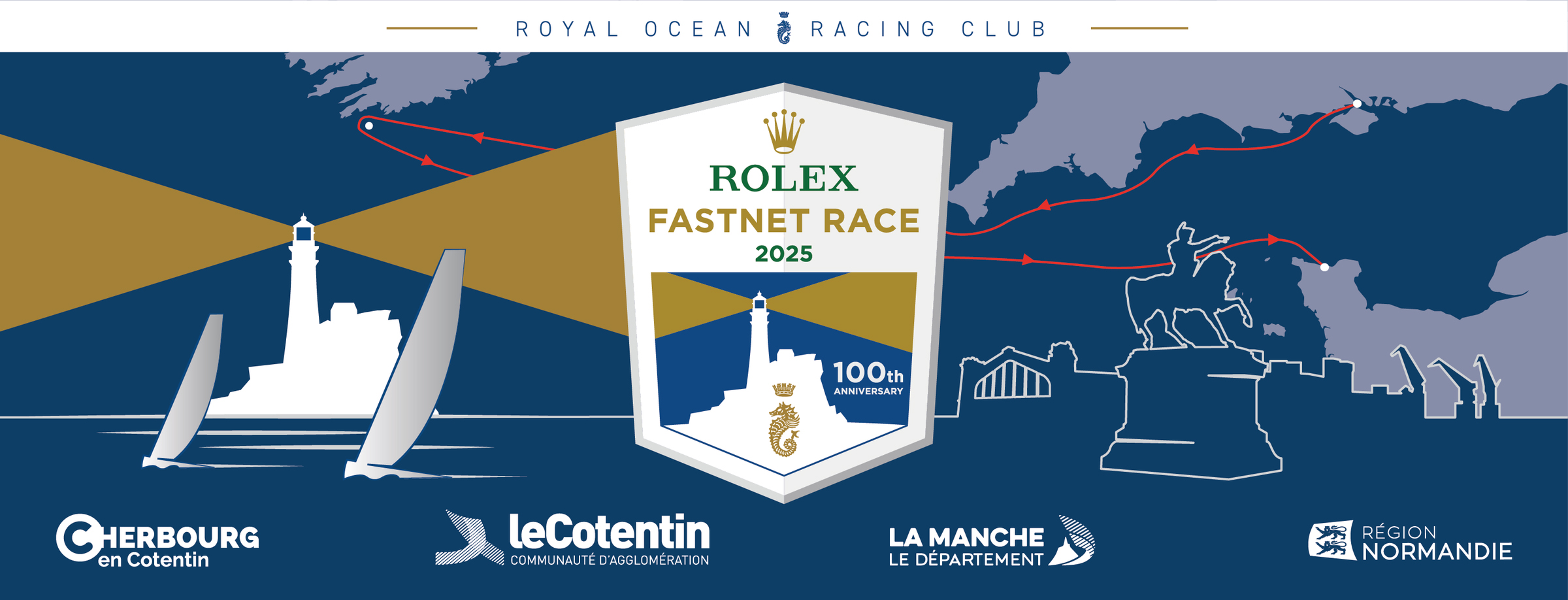

18:00 Wednesday 30 July 2025
Bedouin Prevails in IRC One
Bedouin’s victory in IRC One shows that you don’t always need the latest in cutting-edge technology to win on corrected time. In amongst all the scow-bowed spaceships of the modern era of French offshore racing, the more traditional lines of the Swan 53 have proven surprisingly competitive in this edition of the Rolex Fastnet Race.
Australian skipper Linda Goddard expected Bedouin to perform well on the upwind phase of the race from Cowes up to the Fastnet Rock. What’s more surprising is that the Swan 53 managed to keep the modern scow bows at bay for the downwind return towards the finish in Cherbourg.
“This has definitely exceeded our expectations,” smiled Goddard with her beaming crew of friends, family and teammates. “To have been in this race against some of the world's most competitive racing boats and to do remarkably well against them has been really thrilling. Even though we would play around and do fun things - the Pilates, the blindfold steering competition - everyone was still very focussed and working hard to get as much as we could from the boat.”
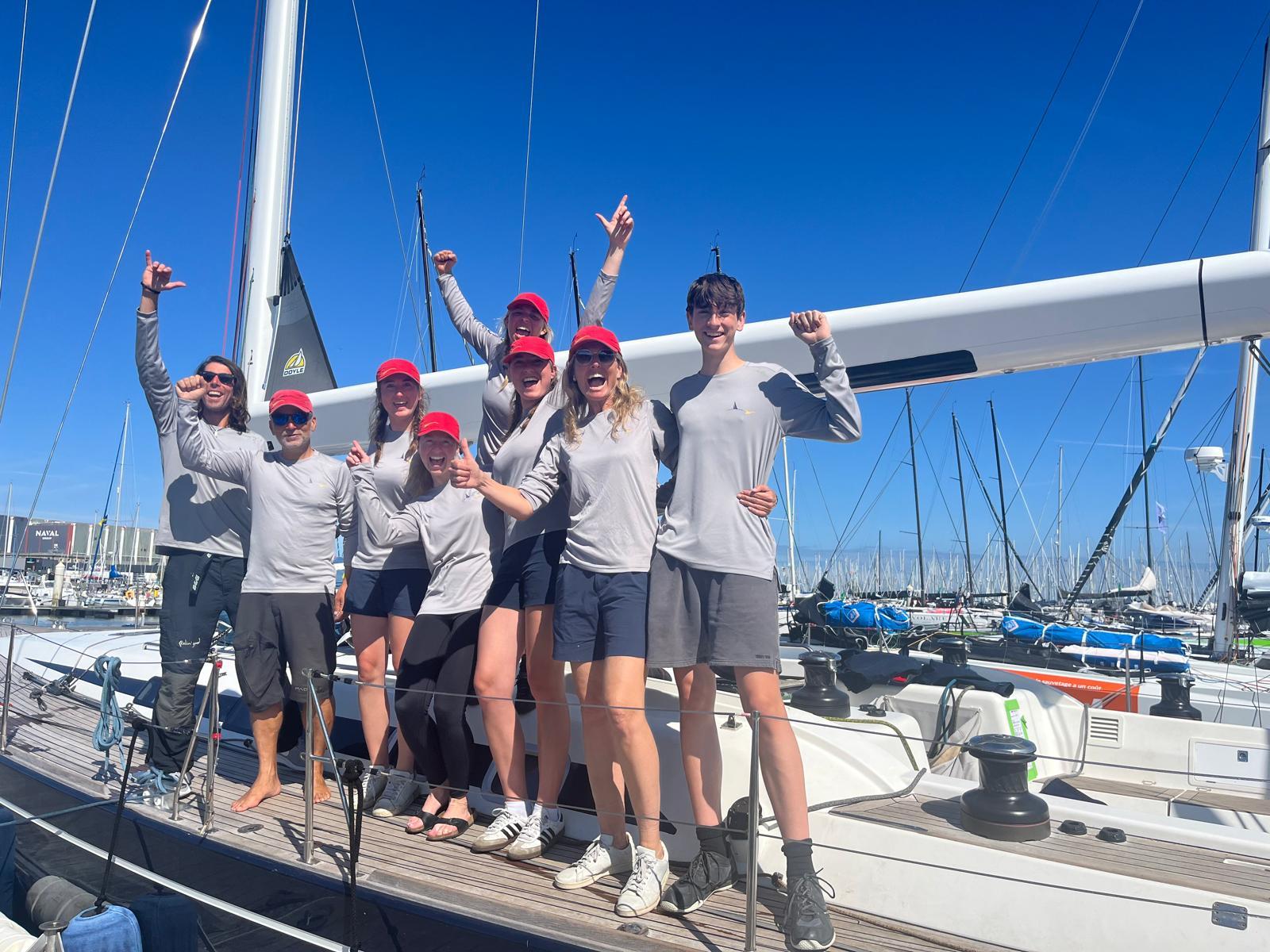 Skippered by Australian Linda Goddard with her children among the crew, Bedouin strived to balance being competitive with having fun © ROLEX/Kurt Arrigo
Skippered by Australian Linda Goddard with her children among the crew, Bedouin strived to balance being competitive with having fun © ROLEX/Kurt Arrigo
It might have been a different story if pre-race favourite Géry Trentesaux hadn’t blotted his copybook by breaking across the Cowes start line a fraction too soon. That small error of judgement slapped a two-hour time penalty to their overall time on Long Courrier, Trentesaux’s Sydney GTS 43 packed with former Figaro offshore talent. The additional time knocked Long Courrier off the top spot down to second overall, just over an hour on corrected time behind Bedouin. “I was not happy with the OCS penalty,” said Trentesaux who 10 years ago was outright winner of the Rolex Fastnet Race. “If I did a mistake, it’s my fault. As always, we had a great crew and the boat was going really well, and overall we enjoyed the race.”
It was a similar story of what might have been for Dawn Treader, Ed Bell and Mark Spearman’s JPK 1180, who also incurred their own starting penalty. The British team finished just over two hours off the winning Australian time, so it would have been incredibly close if Dawn Treader had managed to keep her nose clean off the Cowes start line. At least they succeeded in besting their fellow JPK 1180, Eric Fries’s Fastwave 6, by 11 minutes, the French boat finishing fourth overall.
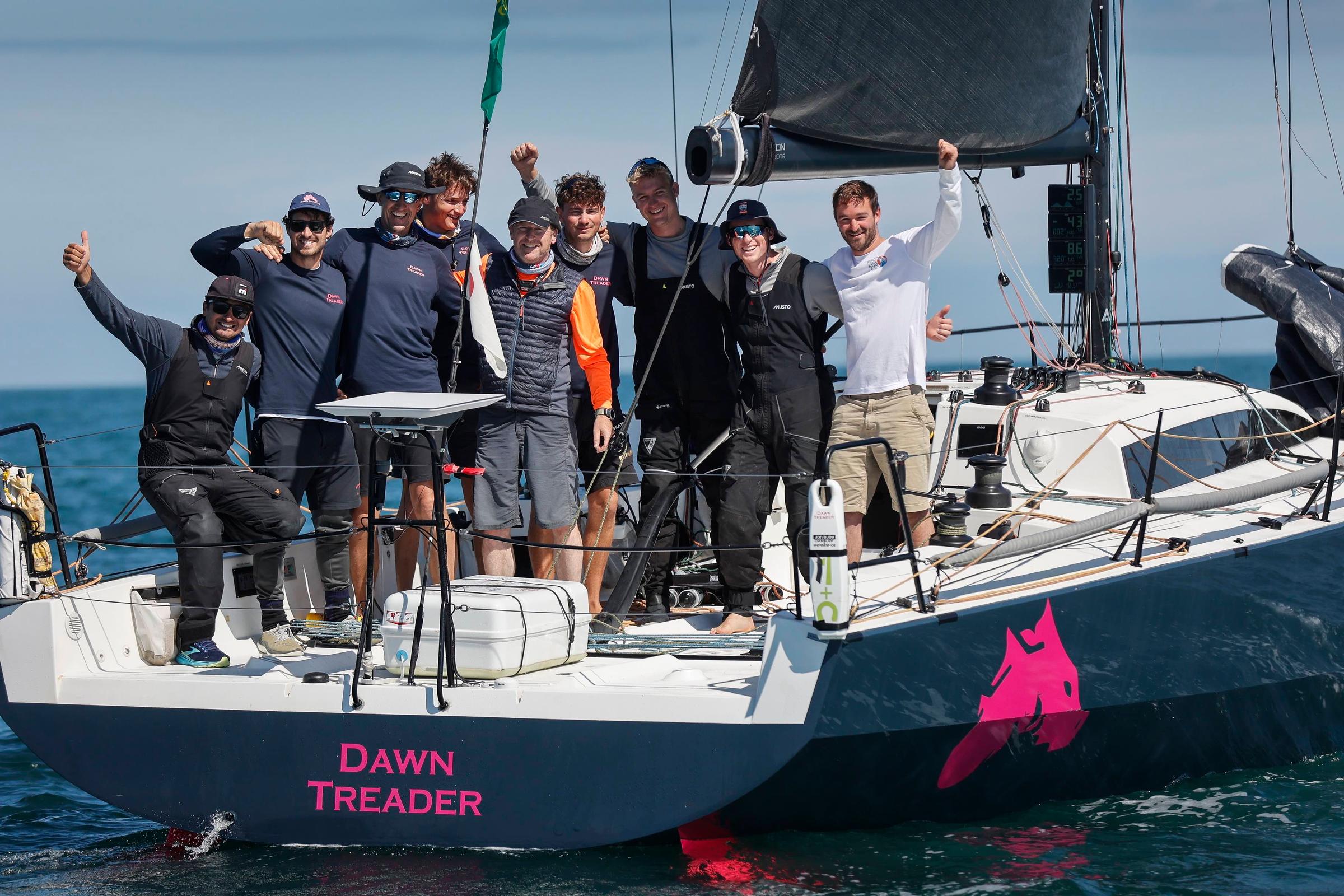 Ed Bell's JPK 1180 Dawn Treader finished 11 minutes ahead of fellow JPK 1180 Fastwave 6 © Paul Wyeth/RORC
Ed Bell's JPK 1180 Dawn Treader finished 11 minutes ahead of fellow JPK 1180 Fastwave 6 © Paul Wyeth/RORC
Finishing further back in fifth and sixth respectively were two classic yachts that did incredibly well in a predominantly light-airs contest – Stormvogel and Hound. In stronger breeze these two might well have challenged for the podium. Ermanno Traverso and Ian Hulleman continue to push Stormvogel to great Fastnet performances, this being the boat that took line honours in 1961.
 Beautiful but competitive, Hound is one of a select group of classics that took its varnished topsides to the start line © Paul Wyeth/RORC
Beautiful but competitive, Hound is one of a select group of classics that took its varnished topsides to the start line © Paul Wyeth/RORC
The 59ft Nielsen-designed Hound, built in 1970, oozes old-school class, although below the immaculate varnished surface are installed some state-of-the-art components and systems. Owned by Dan Litchfield, and captained by Tom Stark since 2020, Hound has recently undergone an extensive refit, including a taller carbon mast. The carbon bowsprit, painted to merge seamlessly in with the rest of the varnished wood of the deck, is a high-tech work of art.
British navigator Conrad Humphreys has clearly enjoyed every moment on board Hound, having sailed with the team in the recent Transatlantic Race, and now the Rolex Fastnet Race. “Not only is she a beautiful boat, it’s great to see how competitive we can be, particularly on the upwind legs. She’s 25 tons, and if necessary we can stay in a high mode for longer periods than the more modern, lighter boats. And downwind we can sail really low, as much as 160 degrees true, and still maintain our speed whereas the boats like the JPKs are having to sail higher modes.”
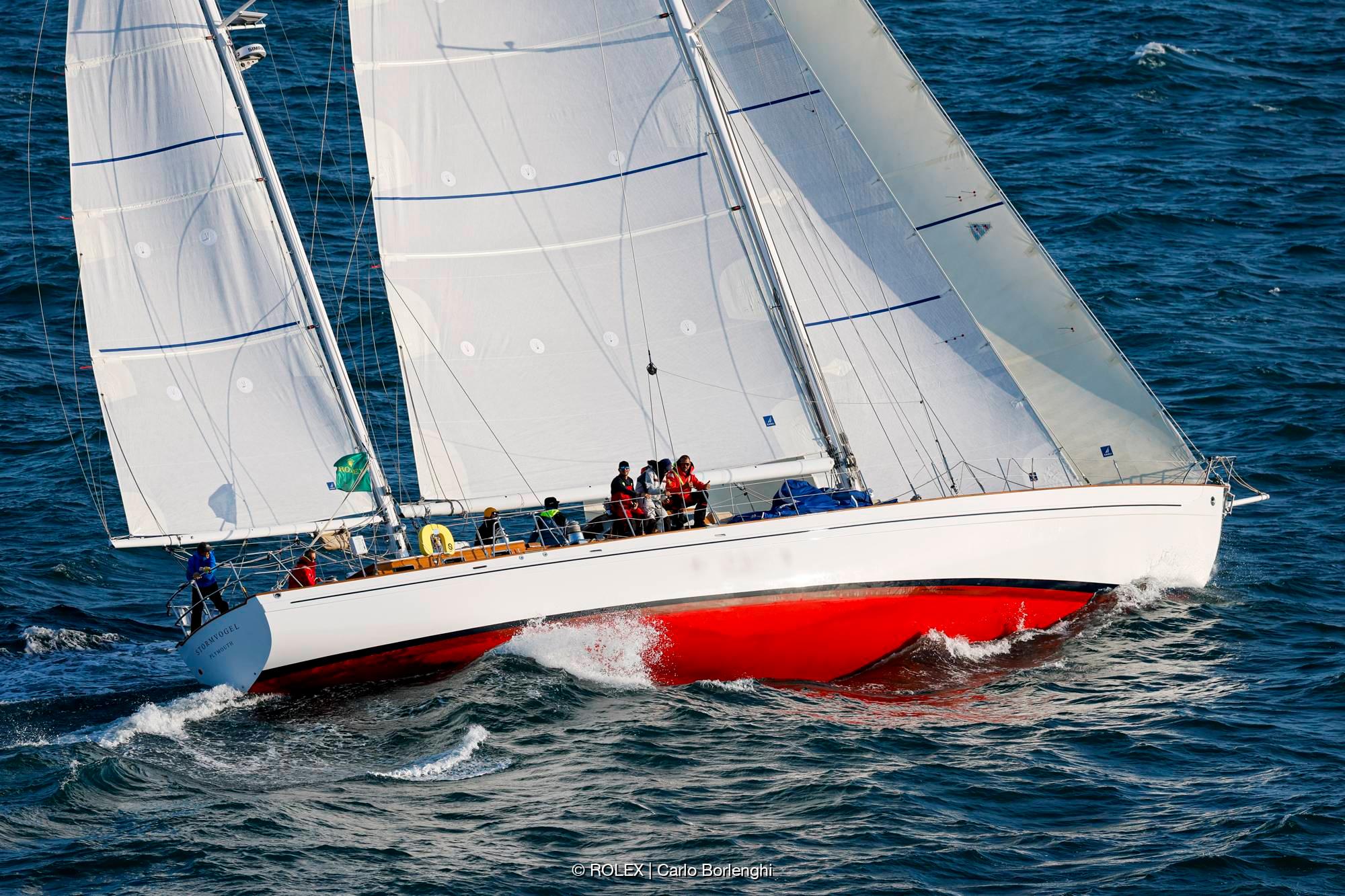 Previous 1961 Fastnet winner Stormvogel still proves her competitive edge, finishing 5th in IRC One © ROLEX/Carlo Borlenghi
Previous 1961 Fastnet winner Stormvogel still proves her competitive edge, finishing 5th in IRC One © ROLEX/Carlo Borlenghi
However Hound was another victim of the OCS scoring penalty from that incredibly congested start line near the Royal Yacht Squadron, although the crew was not informed of their error until some days later.
Despite that frustration, Humphreys and his teammates on Hound enjoyed the race, particularly the rounding of the Fastnet Rock, capturing their own images of the moment on their drone. “Most of the crew had never done the race, had never seen Ireland or the Rock, and we went around in these misty conditions. It was quite an atmospheric rounding, it was quite a moment among many special moments in the race.”
IRC Two: Vive La Revolution
The closer they drew to the French coast, the stronger the French stranglehold on IRC Two. Not only that, but it was the French doublehanded brigade who locked out the top three places in this diverse, 70-boat fleet.
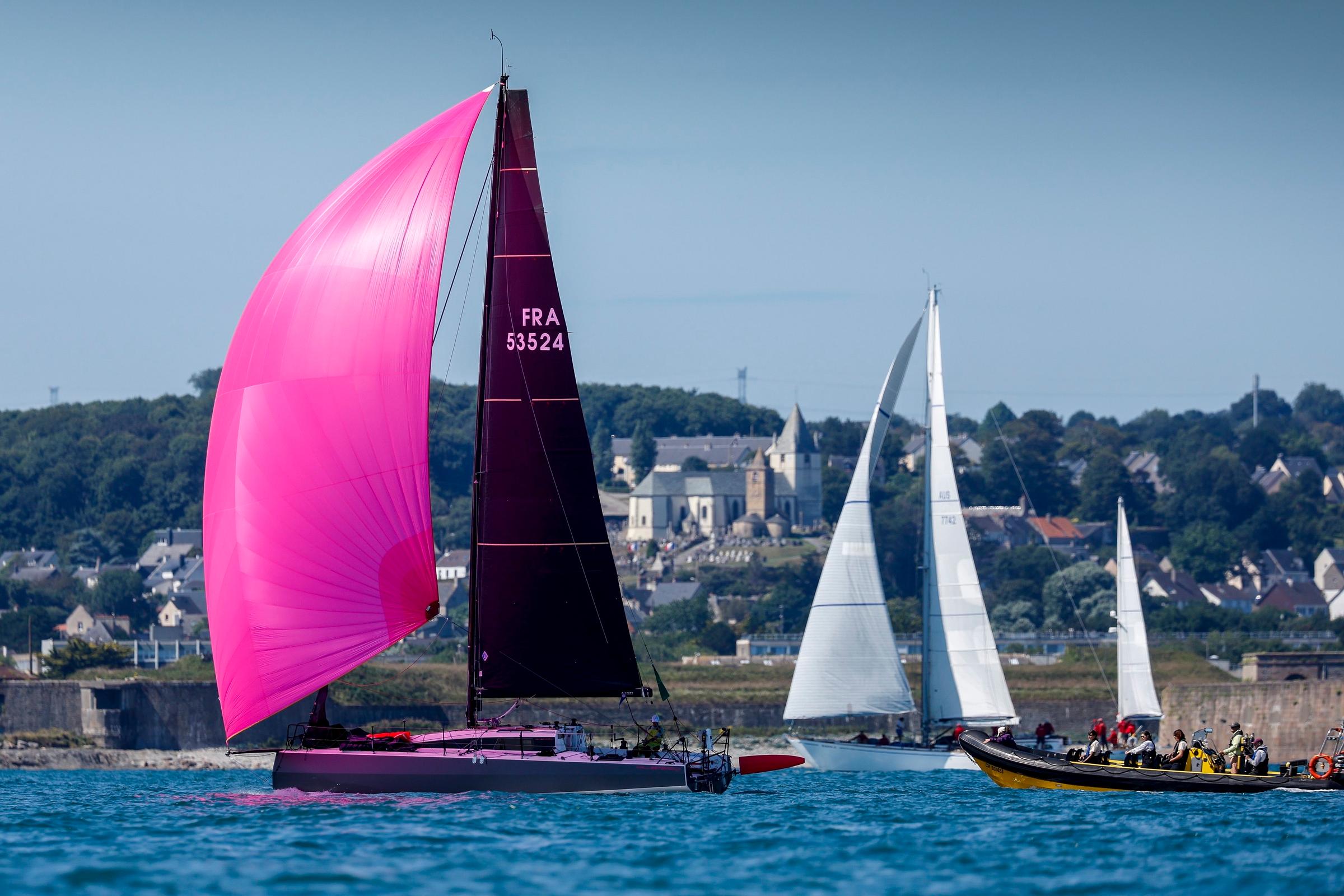 A hero's welcome for Léon, who cruised in under an unmissable spinnaker to Cherbourg-en-Cotentin, skipper Alexis Loison's home town © Paul Wyeth/RORC
A hero's welcome for Léon, who cruised in under an unmissable spinnaker to Cherbourg-en-Cotentin, skipper Alexis Loison's home town © Paul Wyeth/RORC
Top of the crop was Léon, a new and revolutionary JPK 1050 which started as one of the favourites in the hands of the highly accomplished duo, Alexis Loison and Mr JPK himself, Jean-Pierre Kelbert. The early signs were very promising for this new design, as Kelbert pointed out. “The first one was launched in March this year and together we already won three out of four races, finishing second in the other.
“So it was a good start for the boat. It’s quite radical, with a powerful shape and a very light construction, along with a lot of sail area, which means a very high rating for the boat. But it works…it works really well. And it adds so much pleasure.”
Lann Ael 3, one of the inspirations for the JPK 1050 concept, finished second in IRC Two, with Didier Gaudoux sharing the load with Erwan Tabarly, leading Figaro sailor and nephew of Eric Tabarly and leading Figaro sailor. Gaudoux admitted to feeling his age. “I’m 67 – this will be one of my last Fastnets. I know Géry [Trentesaux, skipper of Long Courrier] says the same, but it will be true in my case,” he laughed. Trentesaux has a reputation for doing as many farewell tours as Elton John.
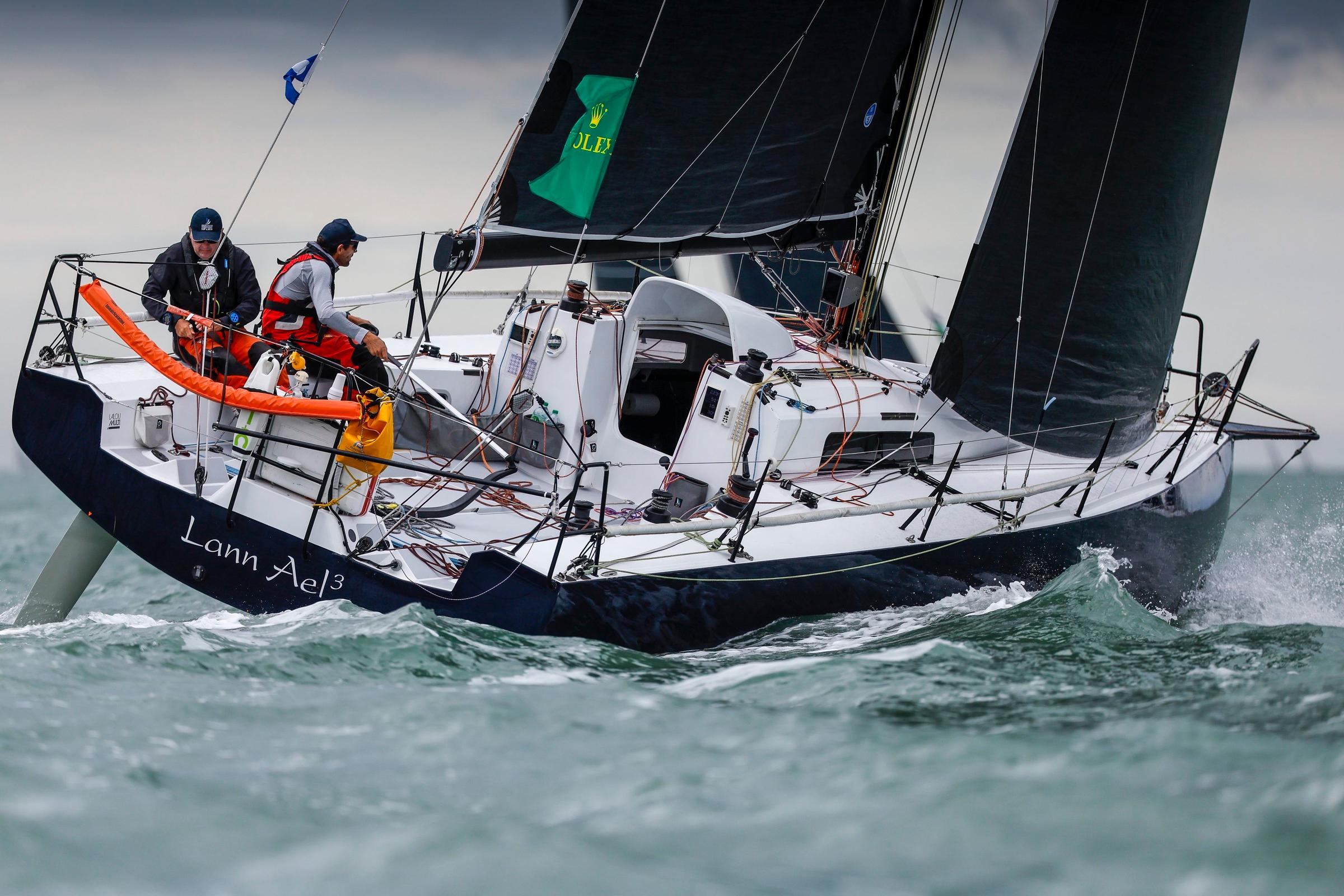 Doublehanded Didier Gaudoux and Erwan Tabarly on JPK 1050 Lann Ael 3 had a strong run in what may be Gaudoux's last Rolex Fastnet Race, finishing second to Leon © Paul Wyeth/RORC
Doublehanded Didier Gaudoux and Erwan Tabarly on JPK 1050 Lann Ael 3 had a strong run in what may be Gaudoux's last Rolex Fastnet Race, finishing second to Leon © Paul Wyeth/RORC
Gaudoux paid tribute to his long-time partner, the younger and very energetic Tabarly. “Erwan did a fantastic job in terms of strategy. We discussed one or two points. He listens to me, but he takes the final decision. We have sailed together for more than five years so we’re like an old couple,” said Gaudoux, adding with a smile: “At least, we know how to cut the saucisson.”
There was a sting in the tail for the ‘old couple’ however. “The end was quite difficult because we had a blackout of electricity – nothing, full black. So we had the last 24 hours just helming (ie no autopilot) and trying to match the situation. In any case, it will not change the result, to be very honest. Overnight we had no AIS, so we didn't know where the ships were – it was... interesting.”
Having arrived in Cherbourg, Gaudoux must now turn his attention to other duties. “The day of the start, I got a new granddaughter. So first I have to visit her and be the good grandfather.”
Finishing less than three minutes on corrected time behind Lann Ael 3 was a Pogo RC, Amarris, sailed by Achille Nebout and Tanguy Bouroullec. Had it not been for a two-hour time penalty for starting too early, it could have been French scow bow designs taking the top four spots, but the new JPK 1050 Solenn for Pure Ocean, co-skippered by Ludovic Gerard and Elliott Coville, had to settle for fifth place.
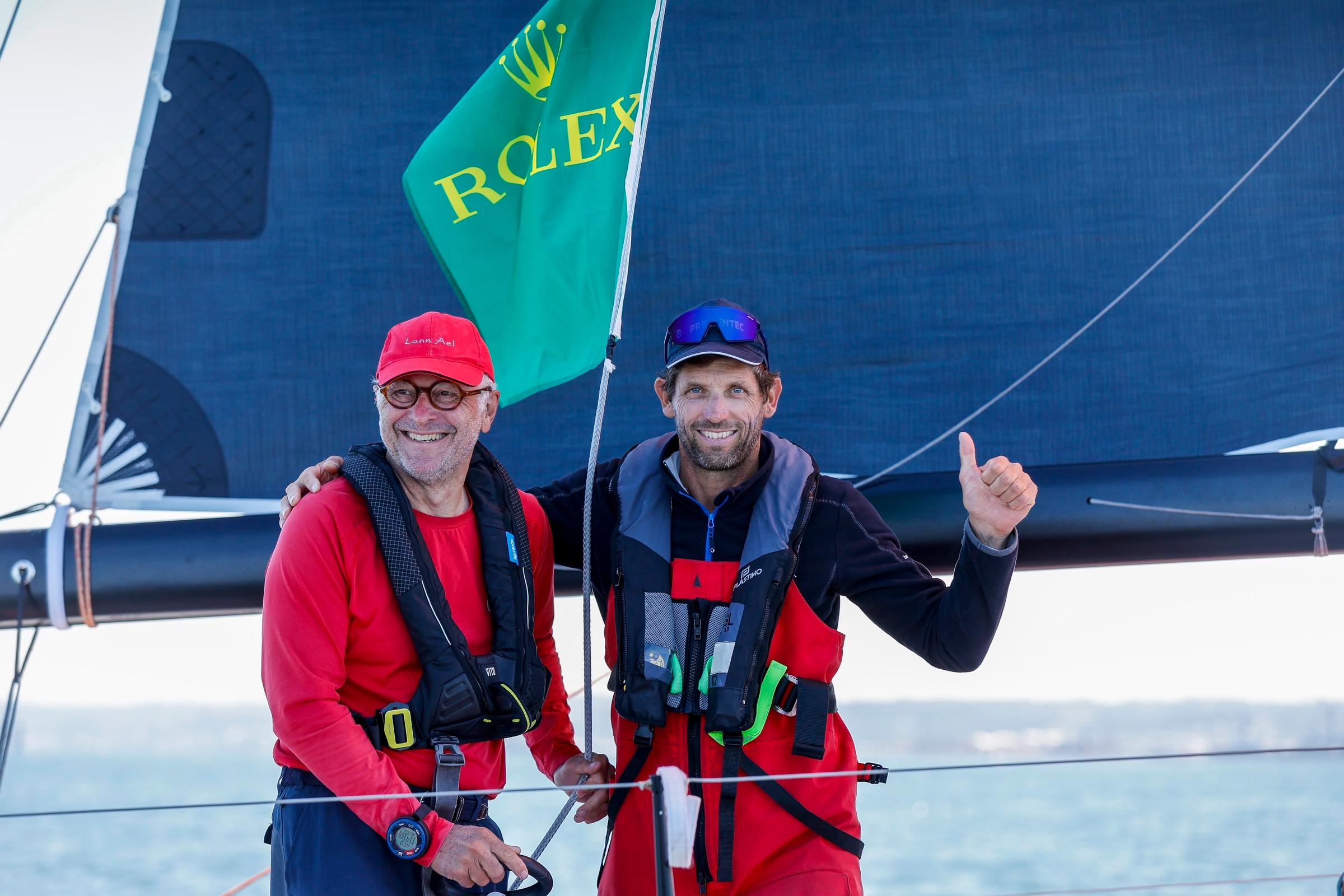 Didier Gaudoux and Erwan Tabarly on Lann Ael 3 © Paul Wyeth/RORC
Didier Gaudoux and Erwan Tabarly on Lann Ael 3 © Paul Wyeth/RORC
Instead, the first non-French finisher in IRC Two was the ever-reliable Scarlet Oyster, Ross Applebey’s Lightwave 48. A perennial podium finisher, on this occasion Applebey and his beloved 48-footer couldn’t quite match the new enfants on the block, with the British boat finishing fourth, around two and a half hours behind third-placed Amarris on IRC corrected time.
Lawrence Herbert’s J/133 Corazon sailed well up to the Fastnet Rock, at times showing as the leader in the division, but after the long downwind ride back to Cherbourg the British team finished in sixth place.
Only one doublehanded team has ever won this race outright, and that was the father and son duo, Pascal and Alexis Loison. In 2013 they sailed their JPK 1010 Night and Day to victory in Plymouth. Could Alexis, this time with Jean-Pierre Kelbert, become the first ever doublehanded sailor to win the Rolex Fastnet Race a second time?
Having conquered IRC Two, the waiting game continues as the smaller and slower boats still roll into Cherbourg from the English Channel. If Loison – along with Kelbert – wins the Fastnet Challenge Cup this year, it will confirm the 40-year-old from Rouen as one of the all-time greats in the 100-year history of the Rolex Fastnet Race.
by Andy Rice
